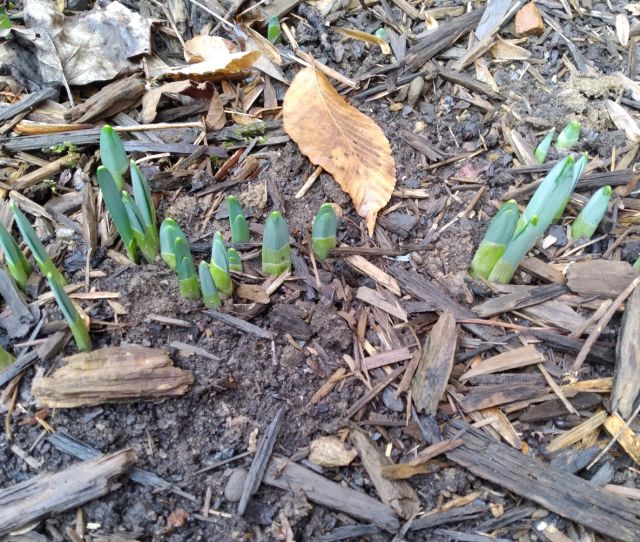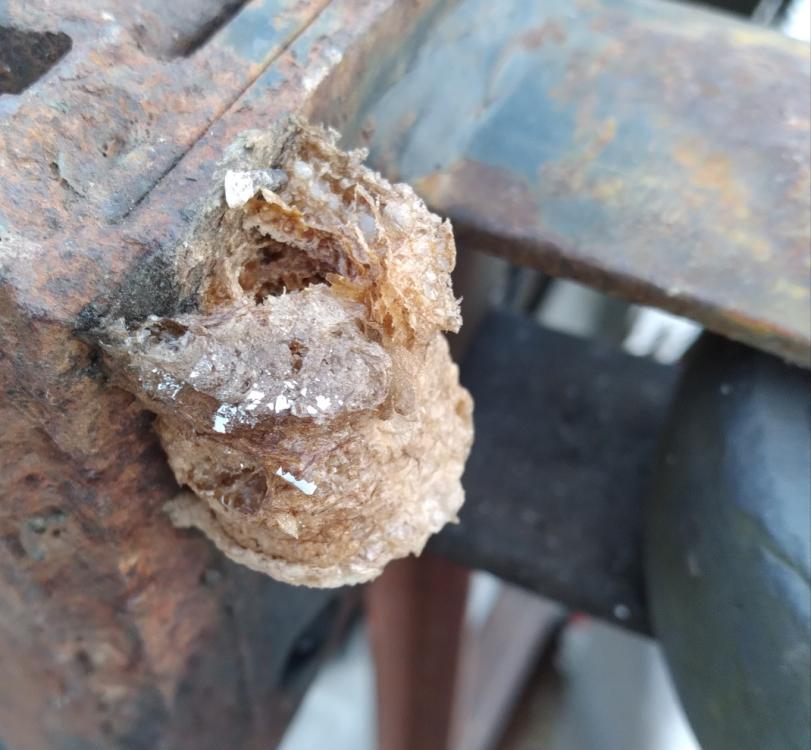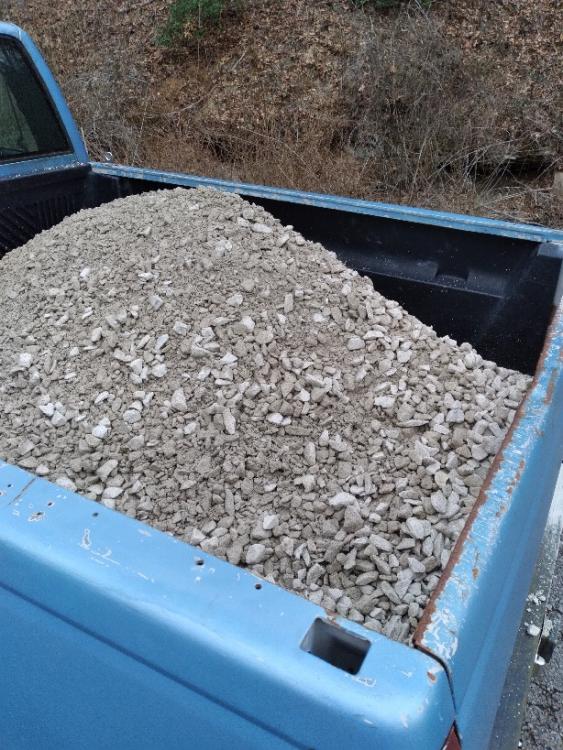-
Posts
17,325 -
Joined
-
Last visited
Content Type
Profiles
Forums
Articles
Gallery
Downloads
Events
Posts posted by Glenn
-
-
-
When you visited IForgeIron, you have access to over 60,000 members in over 150 countries of the world, and their combined data base of information.
The issue is how to solve the problem. If you can not lower the anvil face, then raise blacksmith. The end result is the same. Take the information to the forge, test out the suggestions, then come back to the site, tell us how it worked. If you need other options, just ask.
As blacksmiths, we tend to over think, over build , and over complicate things. If that does not work, we break it so we can build it back, better than before, with modifications or improvements. It is our nature.
-
Build a 4 cm thick platform to stand on.
-
If you are looking for rail road steel go to the rail yard or where they work on rail roads. If you are looking for heavy plate steel, go to where they use heavy plate. There are going to be scraps there.
-
It may help to base your decision on if a fuel is available in your local area, and the .BTUs in each fuel. The metal does not care how it gets hot, that it is hot enough to be worked.
While you are at it, look into electric induction heating. Lots of advantages after you get past the initial cost.
-
Blacksmithing hot cut.
Cold chisels
Dressing the end of a chisel. Take note of the struck end.
Rail Road cold cut chisel

-
Looks like the chisel used to score a rail road track rail so it can be broken.
Definitely remove the mushrooming before you use it.
-
For years I used the small tins of shoe polish. Made a nice shine but did not do much for the barnyard dirt, mud, water, and etc .
What do you use as a boot or shoe protection or polish ?
-
A chain, secured on one end and with a weight on the other, thrown across the work piece will help some.
Sharp corners are improved with the metal heated or HOT. The metal bends a lot easier that way. Follow that with a hammer to improve the sharpness.
-
Start with something close to the profile you want, as it saves time and effort. There are many ways to attach metal together. Study what you want to make and use existing methods to build that item.
-
Build a bed of coals (embers) from kindling or small wood before adding the coal a little at a time. Keep a hole open at the top of the fuel for smoke to escape and catch fire. Think of a volcano. This allows the coal and fire to form coke as it releases and burns the volatiles (smoke). As the fire catches, add more coal a little at a time.
-
Labor saving device is a round point shovel and a garden wheel borrow. Small bites and light loads are easy to move and place, just takes a few more of trips.
-
Tomorrow's memories are made today.
-
-
January 3, 2023 and everyone is looking for spring to arrive.

-
The term ‘denatured alcohol’ refers to alcohol products adulterated with toxic and/or bad tasting additives (e.g., methanol, benzene, pyridine, castor oil, gasoline, isopropyl alcohol, and acetone), making it unsuitable for human consumption. This is followed by wear gloves, safety glasses, etc etc when handling denatured alcohol.
One more question if I may. My mix is 50/50 linseed oil, turps, a quart of both and an egg or so sized piece of beeswax.
At the store chicken eggs come in different sizes, small, medium, large, extra large, jumbo. Which size egg should I use as a starting point?

-
Thank you for the follow up explanation.
The smaller the graduation on the scale, (ml vs quarts) and larger the quantity of the final mix batch, (gallons vs ounces) the the more consistent and useful the mix. Once mixed, storing in reasonable sized containers just makes sense.
Given your measurements, provides a reason to go to the shop and mix up a test batch, to see how it works here. Thank You.
-
Thank you for the photos.
-
Thank you for the explanation.
Please add the type of heat source you are using.
What type of oil or oil mix you are using, and the source volume of that oil or oil mix you can draw from. (ounces, quarts, gallons, etc.)
-
Let is go back to the basics, and use mild steel. Let's call black heat, as heat from ambient temperature to temperature that does not show color. You need to throw in normal room lighting, or lighting in shadow conditions, into the mix.
The only way to insure repeatability as to touching it with a corner of my application rag and watch for the smokes heavily amount of smoke. Once that happens, then to measure that heat, which should give you a number in degrees. Hit that number the next time and you are good to go.
This is true with many crafts, tighten the bolt to snug or use a torque wrench, set the temperature of the oven to bake a cake, or use an oven thermometer to be sure, driving down the road at a speed or looking at the speedometer, etc. It is not shortening a learning curve but starting out at a known standard, or a reference point.
-
There is a difference between just starting to smoke, just a little smoke, and rolling smoke.
Applying wax or oils at the melting points allows it to flow into and the small areas. It is an easy way to provide better coverage to the metal and therefore protection. One question that keep coming up is when wax or oil and it smokes, what is left on the metal after the wax or oil vaporizes to smoke?
Experience level is sometimes difficult to put into words and pass that experience on to others. Visual aids are one way. Too hot to hold is subjective depending on the individual. When using a wood cooking stove, the cooks can "feel" the right temperature. Those using an open fire to cook on or with or wood fired pizza ovens learn by feel when the temperature is right or if the time needs adjusted without consulting a clock.
-
May you all have a Happy and Prosperous 2023.
-
The non-contact laser thermometer says the side of the wood stove is 780*F and shows no color in the room lighting.
-
Anvil Use a rag, and start applying the finish when the black heat is too hot. It smokes off and remains grey.
Red heat, visible in the dark is 752*F on the Halcomb scale. Black heat on that scale would be below 752*F.
I have heard that it is black heat up to 1000*F as a talking point
Turpentine will be flammable as soon as it reaches the flashpoint that is 86*F to 115*F (30-46 degrees celsius). If it reaches the temperature and starts the ignition, it will last until all the fuel burns out.
Beeswax softens at 90 deg F (32 C) and melts at 143 to 151 degrees Fahrenheit. However, if you let it heat till its flash point— a higher temperature of about 400 degrees Fahrenheit, you could be calling for an explosion as the beeswax will ignite into flames.
Linseed oil ignites at 200° F. That means if the temperature goes close to 200°F. The typical flashpoint of linseed oil is approximately 200 °F (93.3 °C). Flashpoint means the temperature at which a liquid ignites without warning when in contact with air.
Black heat on that scale would be below 752*F. If it flashes, I remove the can with my poker via the paint can bale and put on the lid.
All three ingredients have a flash point about 500*F lower than the temperature you are using.




Frosty
in Prayer List
Posted
Thank you for the update.
It has been moved to the prayer list.